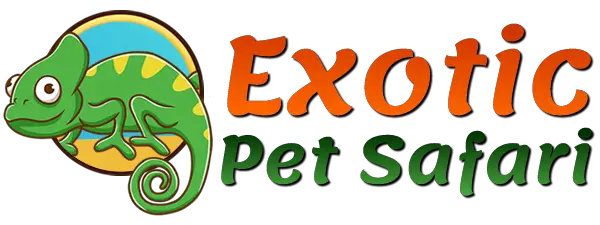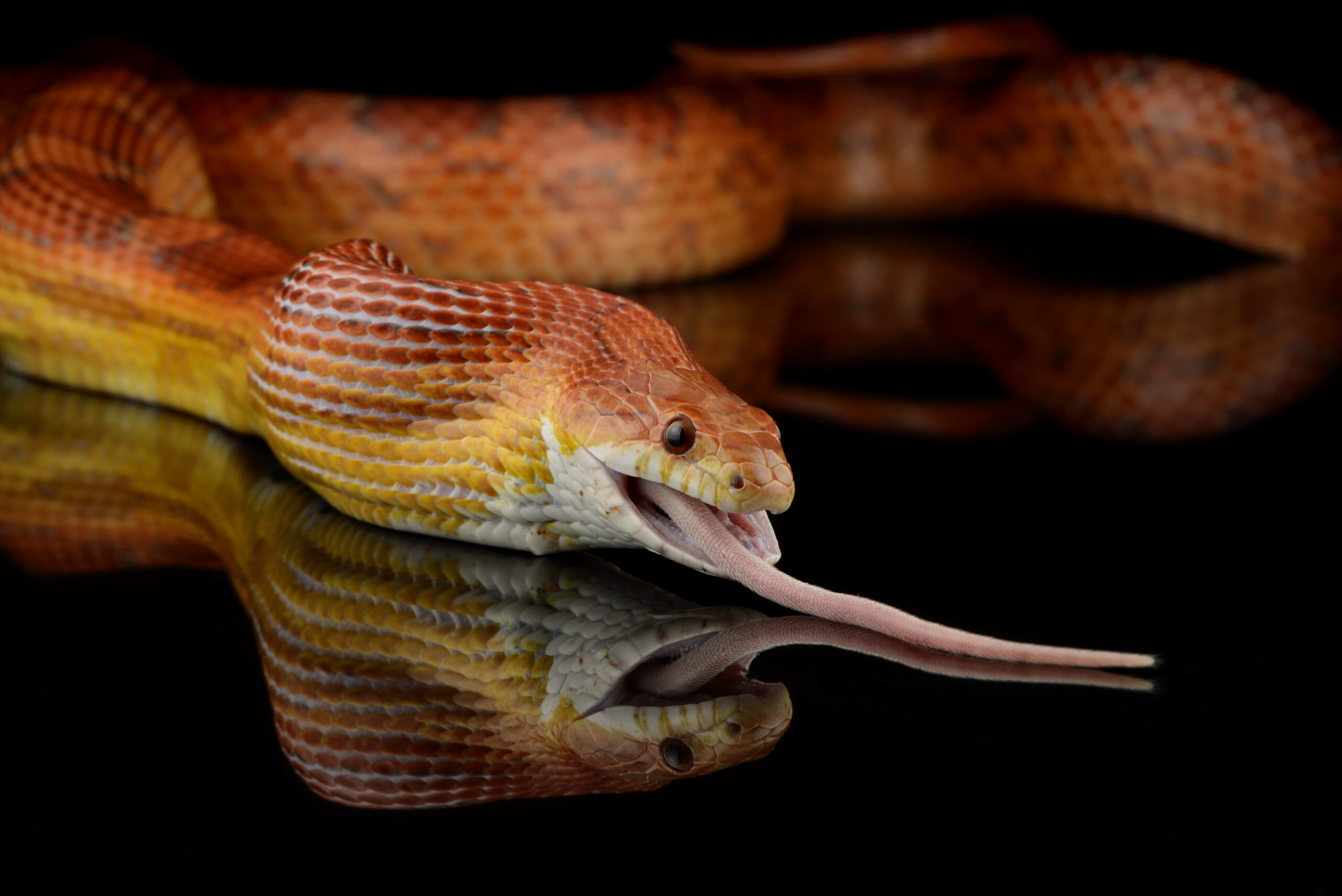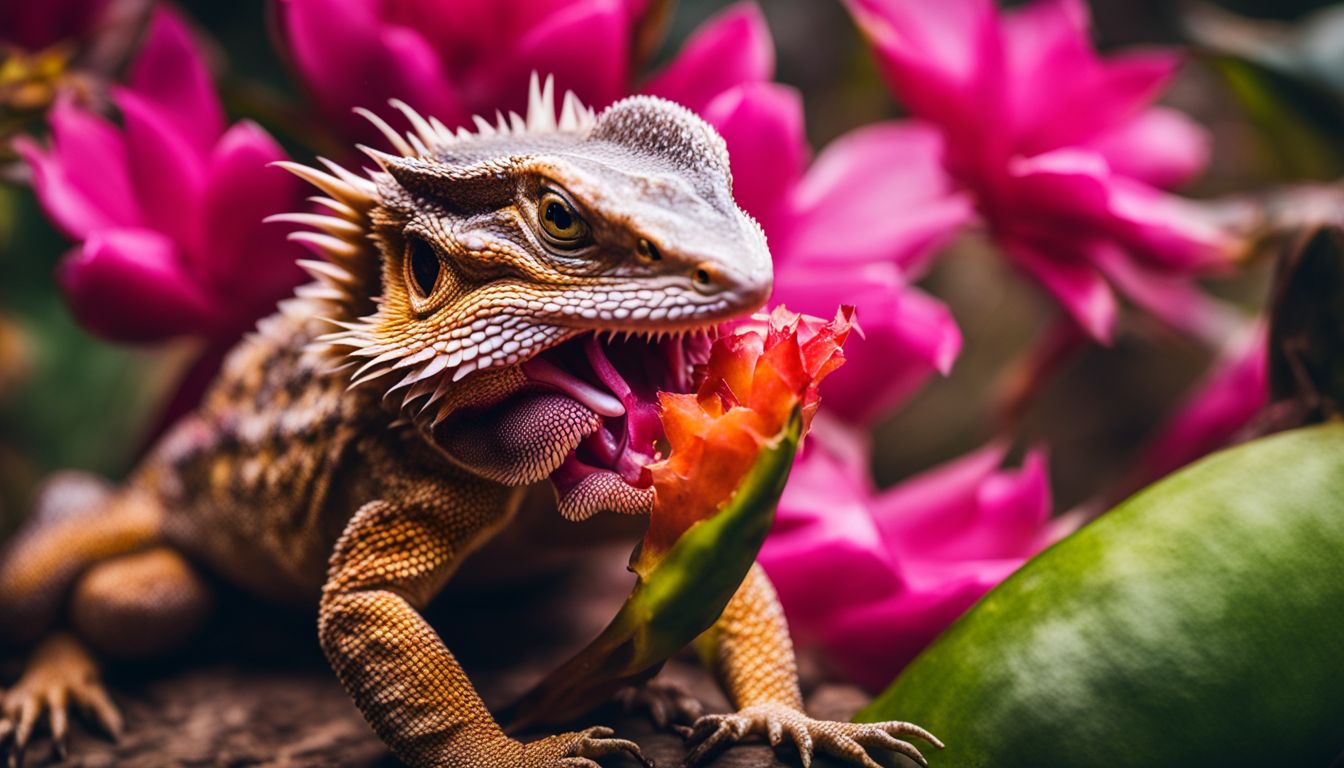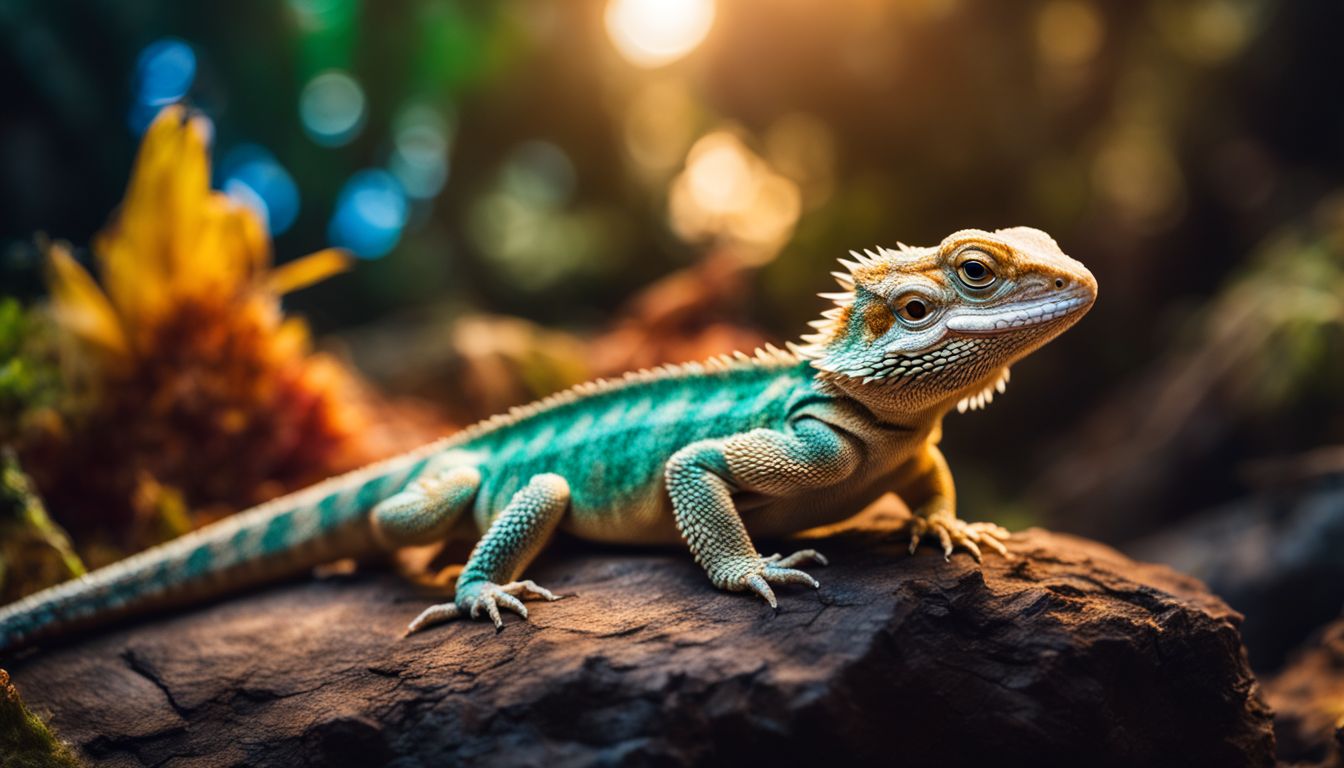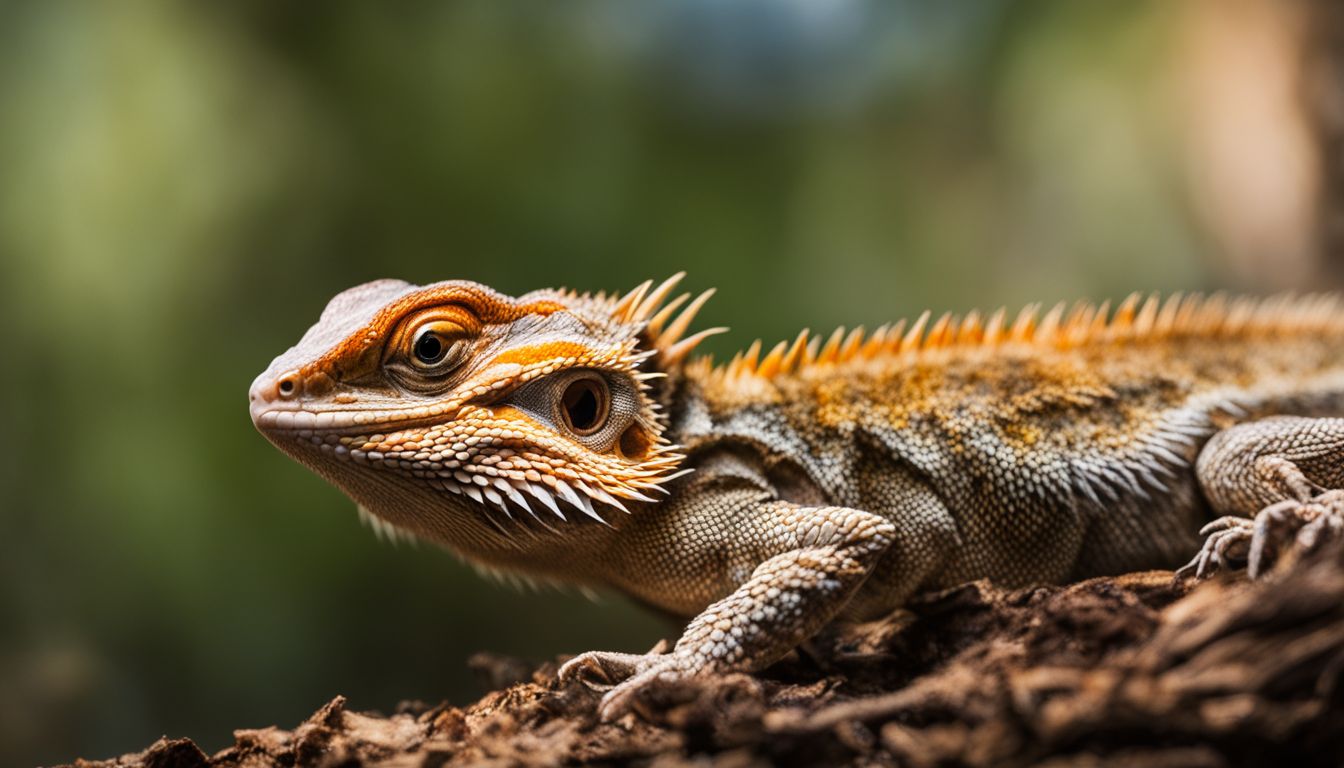Corn snakes are fascinating creatures with unique dietary habits that set them apart from other reptiles. As a corn snake owner or enthusiast, understanding their nutritional needs is crucial to ensuring they thrive and stay healthy in captivity.
In this comprehensive guide, you will learn all about what these intriguing reptiles eat, the frequency and portion sizes for meals, essential feeding tips, and special considerations specific to corn snake nutrition.
Key Takeaways
- Corn snakes are primarily carnivores that require a balanced and diverse diet to stay healthy in captivity.
- In the wild, they feed on small mammals like mice and rats, but offering supplemental food options such as amphibians or bird eggs can provide additional crucial nutrients.
- To avoid health problems from under or overfeeding, it is essential to maintain a regular feeding schedule with appropriately sized prey and monitor your snake’s hunger and fullness signals.
- During shedding periods, it’s recommended not to feed corn snakes as they may have difficulty digesting their food.
Understanding Corn Snakes And Their Nutritional Needs
Corn snakes are naturally found in the southeastern United States and feed on small mammals, birds, amphibians, and reptiles.
Natural Habitat And Feeding Habits
Corn snakes are native to the southeastern and central United States, where they thrive in diverse environments such as forests, fields, and grasslands. Their ability to adapt to different habitats makes them skilled hunters of small animals.
In order to flourish in the wild, corn snakes utilize various hunting strategies based on their surroundings. Ground-dwelling rodents are often stalked beneath fallen leaves or within burrows while tree-climbing or arboreal birds become targets by patiently scaling tree branches before striking with precision.
Nutritional Requirements In Captivity
In captivity, corn snakes primarily rely on commercially reared, frozen-thawed rodents for their nutritional needs. These rodents, such as mice and rats, are typically bred specifically for feeding purposes and provide a convenient source of key nutrients to keep the snake healthy.
However, it is essential to note that feeder rodents may not offer a complete nutritional profile for corn snakes.
To address potential gaps in nutrition offered by feeder rodents, some snake owners supplement their pet’s diet with additional food options like bird eggs or even reptiles such as lizards and amphibians.
In doing so, they aim to mimic the variety of prey found in the snake’s natural habitat more closely.
Understanding what corn snakes eat is important because meeting all nutritional requirements enables them to avoid common health issues related to an incomplete or unbalanced diet – problems which could otherwise become prevalent under captive conditions.
What Do Corn Snakes Eat?
Corn snakes are primarily carnivores and consume a variety of small mammals, including mice, rats, amphibians, and lizards.
Prey Options: Mice, Rats, And More
Various prey options make up an ideal diet for corn snakes, ensuring they receive the proper nutrients essential to their growth and overall health. These include:
- Mice: The most common and readily available food source for corn snakes, mice provide the necessary proteins, fats, vitamins and minerals.
- Rats: While rats can also serve as a nutritious meal for corn snakes, it is crucial to choose appropriately sized rodents to prevent choking or other feeding difficulties.
- Voles: These small rodents can be another suitable food option for captive corn snakes; however, they may be more challenging to source than mice or rats.
- Chipmunks and Squirrels: Corn snakes occasionally eat chipmunks and squirrels in the wild, but it is important to only offer these animals as feed if sourced from reliable breeders.
- Birds and Bird Eggs: Corn snakes may consume birds and their eggs in the wild; in captivity, they can be fed occasional quail eggs as a treat but not as a staple part of their diet.
- Frogs and Lizards: Wild corn snakes sometimes prey on frogs or lizards; however, care should be taken when offering these food sources in captivity due to potential parasites or disease transmission.
Feeding Frequency And Portion Size
Corn snakes require a balanced diet that includes adequate protein, vitamins, and minerals. The frequency of feeding depends on the age and size of the snake as well as the size of its prey.
Juvenile corn snakes can be fed every 5 to 7 days while adult snakes should be fed less frequently, around once every 10 to 14 days.
When it comes to portion size, it is recommended that you feed your corn snake prey items that are approximately 1.25 times their midbody girth. This ensures that they have ample food without overfeeding them which can lead to health issues like obesity or regurgitation.
Always provide fresh water for your snake before and after feeding time and remove any uneaten prey items from the enclosure promptly to prevent contamination or spoilage.
Other Food Options: Bird Eggs, Amphibians, And Lizards
Corn snakes are known to eat a variety of prey, not just rodents. Here are other food options that can be included in their diet:
- Bird eggs: In the wild, hatchling and juvenile corn snakes often consume bird eggs. This is because these young snakes have yet to develop the hunting skills necessary to catch small rodents.
- Amphibians: Corn snakes also eat amphibians like frogs and toads. This is another important prey source for hatchlings and juvenile corn snakes.
- Lizards: Some species of lizards can also be part of a corn snake’s diet. However, it’s important to note that some lizards may have toxic skin secretions, which can be harmful or even lethal to the snake if ingested.
These additional food options provide important nutritional value for corn snakes, particularly during their early life stages.
Feeding Tips For Corn Snakes
Prepare the food and enclosure, establish a feeding time routine, and be aware of signs of hunger and fullness to keep your corn snake healthy – discover more expert advice in this comprehensive guide.
Preparing The Food And Enclosure
To ensure that corn snakes receive balanced nutrition, it’s essential to prepare their food and enclosure properly. Here are some tips for preparing both:
- Thaw frozen prey in warm water: Frozen prey should be thawed in warm water for about an hour before feeding to ensure that it’s at room temperature.
- Use tongs to handle prey: When feeding your corn snake, always use tongs to handle the prey, as this helps avoid accidentally being bitten.
- Clean food dish regularly: After feeding your corn snake, make sure you clean its food dish thoroughly with hot water and soap.
- Remove uneaten prey promptly: If your corn snake does not eat all of their prey, remove it from the enclosure immediately to prevent it from rotting and causing health issues.
- Provide fresh water daily: Fill a shallow bowl with fresh water every day and place it in the enclosure where your corn snake can easily access it.
- Keep the enclosure clean: Regularly clean the enclosure by removing any waste or uneaten prey and disinfecting surfaces with reptile-safe cleaning products.
Feeding Time Routine
Feeding time for corn snakes should be consistent and routine to promote healthy digestion and reduce stress. Here are some tips to follow:
- Always feed the snake inside its enclosure to prevent stress from handling.
- Offer prey using feeding tongs or placing it in a dish.
- Leave the snake alone for 24 – 48 hours after feeding to allow it to digest.
- Remove uneaten prey after 24 hours to prevent spoilage and bacterial growth.
- Wash hands before and after handling prey or the snake’s enclosure to prevent the spreading of bacteria.
By following a consistent feeding routine, you can ensure your corn snake stays healthy and properly nourished.
Signs Of Hunger And Fullness
Corn snakes are known for their healthy appetite and can sometimes overeat if not monitored. It’s important to know the signs of hunger and fullness in your pet snake to avoid under or overfeeding them.
Signs of hunger in corn snakes include restlessness, repetitive tongue flicking, pacing around the enclosure, and searching for food with a raised head.
It’s crucial to not feed your corn snake too often as it can lead to obesity and health problems down the line. In general, adult corn snakes should be fed once every 7-10 days while juveniles may require more frequent feedings.
Keep an eye on your pet’s body condition by monitoring their weight and adjusting feeding amounts accordingly.
Overfeeding And Underfeeding Risks
Corn snakes have specific nutritional needs, and feeding them too much or too little can lead to serious health issues. Overfeeding is a common problem, and it can cause obesity in corn snakes, which can lead to respiratory problems and even heart failure.
To avoid this, make sure the weight of multiple feeders does not exceed 10% of the snake’s body weight.
On the other hand, underfeeding should also be avoided as it could result in malnutrition and stunted growth. Signs of underfeeding include weight loss, lack of appetite, lethargy, and weakened immune system.
To prevent these risks from happening, it’s important to maintain a regular feeding schedule with appropriately sized prey for your corn snake according to its size.
Special Considerations For Corn Snake Nutrition
During shedding periods, it is recommended to avoid feeding corn snakes as they may not be able to fully digest their food which could lead to health issues.
Feeding During Shedding Periods
Corn snakes go through regular shedding periods where they shed their old skin to make room for new growth. During these times, it is normal for them to refuse food as the process can be uncomfortable and stressful for them.
Adult corn snakes may also refuse food entirely during shedding periods, so don’t be alarmed if your pet goes without eating. Instead, provide fresh water and a clean environment to reduce stress levels until the shedding cycle is complete.
Health Issues Related To Diet
The diet of a corn snake is crucial to its overall health and well-being. Failing to provide proper nutrition can lead to various health issues, including digestive problems, obesity, and malnutrition.
Corn snakes require an appropriate balance of calcium and phosphorus in their diet for healthy bone growth and maintenance. A lack of calcium can result in metabolic bone disease (MBD), which causes weakened bones that are prone to fractures or breakage during shedding periods.
Additionally, feeding live prey increases the risk of injury during feeding time.
To prevent these types of health concerns, it’s essential for owners to provide their corn snakes with nutritionally complete diets consisting primarily of small mammals like mice or rats.
By following good husbandry practices such as providing nutritional variety, calculating appropriate portion sizes based on age and weight, monitoring signs of hunger/fullness, and observing dietary restrictions due to shedding periods or illness- among other relevant factors; pet owners will be able to keep their corn snakes healthy and happy throughout their lifespan.
Common Questions About Feeding Corn Snakes
Answering common questions about feeding corn snakes can help pet owners provide the best care for their snakes, so keep reading to learn more.
What Do Baby Corn Snakes Eat?
Baby corn snakes have the same dietary requirements as adult corn snakes. In captivity, their diet should consist primarily of appropriately sized prey items like mice and rats.
Hatchling corn snakes usually eat every 5-7 days, while adults feed every two to three weeks. Frozen-thawed rodents are a convenient and safe option for feeding baby corn snakes, but it’s essential to make sure that the food item is not too large or too small for them to consume easily.
Providing a varied diet with different types of prey can also ensure that they get all the necessary nutrients.
Can Corn Snakes Eat Crickets Or Fish?
Corn snakes are primarily carnivorous, and their natural diet consists of small mammals, such as rodents. While crickets and fish may seem like viable food options for other reptiles, corn snakes do not typically eat these types of prey in the wild.
It’s important to note that feeding your corn snake a varied diet can help ensure they get all the nutrients they need. While crickets and fish may not be suitable as their primary food source, you can consider offering them occasionally as a treat.
How To Defrost Frozen Prey?
When it comes to feeding your corn snake, it is important to defrost frozen prey safely and effectively. Rather than using a microwave, which can heat the prey unevenly and potentially cook parts of it, it is best to take the prey out of the freezer a few hours before feeding time.
It is also crucial to store frozen prey properly until the day of feeding. Leaving it out too long at room temperature can increase bacterial growth and lead to illness in your snake.
Instead, keep the frozen prey completely frozen until ready for use.
Are Corn Snakes Friendly During Feeding?
It is common for pet owners to wonder if their corn snakes are friendly during feeding time. The truth is, corn snakes do not develop a bond with their owners or see them as friendly during feeding.
They are simply responding to the scent and movement of prey.
To ensure a stress-free feeding experience, it’s best to feed your corn snake in its enclosure. This allows the snake to feel safe and secure while eating.
Additionally, always use tongs or forceps when offering food to decrease the risk of being bitten accidentally.
Conclusion And Final Thoughts 💭
In conclusion, corn snakes are carnivores that require a balanced and nutritious diet to maintain their health and well-being both in captivity and the wild.
They primarily feed on small mammals like mice and rats, but other prey items such as amphibians, lizards or bird eggs may also form part of their diet.
Feeding corn snakes is relatively easy, but it’s important to ensure they eat whole prey appropriately sized for their age and size while avoiding overfeeding or underfeeding them.
FAQs:
What is the typical diet of a corn snake in the wild?
In their natural habitat, corn snakes primarily eat small rodents like mice and rats. They may also consume other prey such as birds, lizards, and amphibians.
Can I feed my pet corn snake live prey?
While it is possible to offer live food to your pet corn snake, it can be dangerous for both the snake and the prey item. Live prey can sometimes injure or even kill your snake, so it is generally recommended to offer pre-killed/prey that has been humanely euthanized.
How often should I feed my juvenile corn snake?
Younger snakes require more frequent meals than adults; roughly every 5-7 days until they reach maturity (around 1 year of age). Adult snakes only need to be fed once every 10-14 days depending on size & metabolism rate as well as health status/health issues related to dietary concerns.
What kind of nutrients do corn snakes need in their diet?
Corn snakes need a varied diet rich in protein from sources like rodents or poultry nutritionally balanced frozen/thawed items purchased at reptile stores OR specially formulated solid diets designed for specific reptiles based upon individual needs/preferences/preferences dictated by veterinarian recommendations..Aim for variety in order to ensure adequate nutrient intake while avoiding significant overdose levels which may cause toxicity if over-consumed by individuals with low tolerance towards various compounds found within said foods. With proper care & attention – Corn Snakes can thrive on lenient meal plans though figuring out ideal rations early on will set the foundation for pivotal lasting success!
